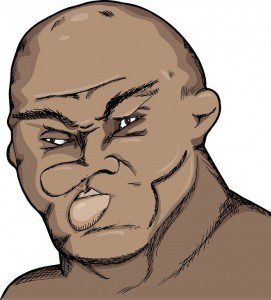
How to treat Cauliflower ear. If you’ve spent any time around the sport of Brazilian Jiu-Jitsu, chances are you’ve noticed that some students, particularly those with years of experience, tend to have lumpy, misshapen ears. This is a condition commonly known as cauliflower ear. Prevalent among grapplers of all types, this condition is typically viewed as either a badge of honor or as something to be avoided at all costs.
What is it?
Cauliflower ear occurs when either a direct blow or excessive friction causes a blood clot or collection of fluid to develop under the ear’s connective tissue. This causes the ear’s cartilage to separate from its overlying tissue. Leading to the formation of fibrous tissue in the overlying skin. As a result of this separation and tissue formation, the outer ear becomes swollen and deformed, taking on a cauliflower-like appearance.
What kinds of activities cause it in Brazilian Jiu-Jitsu?
In Brazilian Jiu-Jitsu, any technique that results in compression of the ear can potentially result in this condition. For example, armbar and triangle choke drills both create friction against the ears. If done repeatedly, this can lead to irritation and the accumulation of fluid under the affected ear’s connective tissue. Another surefire way to irritate your ears is to muscle your way out of chokes. Even takedowns can lead to this condition. Wrestlers typically develop cauliflower on the ear opposite of their preferred shooting side.
How can it be prevented?
1) Wrestling headgear – The easiest way to prevent cauliflower ear is to wear wrestling headgear. Wrestling headgear varies in price and quality, so you should go online and read some reviews before purchasing. Headgear can feel a little uncomfortable at first, but it’s a worthwhile sacrifice if you’re serious about avoiding cauliflower ear.
2) Proper technique – As mentioned above, attempting to power your way out of guillotines, triangles, and other chokes tends to produce an extraordinary amount of friction on the ears. Not only can this cause cauliflower ear, but it’s also poor technique. Learn how to escape chokes correctly, and you will not only reduce your chances of developing cauliflower ear, but you’ll become a better grappler in the process.
3) Awareness and rest – While cauliflower ear can occur almost instantaneously from a direct blow to the ear, it is typically a gradual process. One of the early warning signs of oncoming cauliflower ear is redness and soreness. So, when your ears begin to feel tender, simply take a break until they feel normal again.
How to treat Cauliflower ear?
1) Ice – Ice should be applied to your ear as soon as swelling occurs. Using ice will help to reduce inflammation and can slow the flow of blood into the space between the skin and cartilage of your ear. Ice should be applied to the injured ear for approximately 10 minutes at a time, every hour or so, for about four hours from the time the swelling first occurs.
2) Compression – In addition to applying ice to the area, wrap a bandage around your head to create pressure against your ear. The combination of ice and compression is an effective way to combat swelling. In addition, this increased pressure can slow the buildup of fluid in the ear.
3) Draining – The blood and fluid that collects under the ear’s connective tissue can typically be drained. This is best if taken care of within approximately 48 hours from the time of the injury. While some people prefer to do this themselves with a hypodermic needle, it’s highly recommended that you have a physician perform this procedure for you. Draining may need to be done more than once. It is not unusual for the affected area to fill back up with fluid following the initial treatment.
Remember, when it comes to cauliflower ear, a little prevention goes a long way! See you on the mats!



